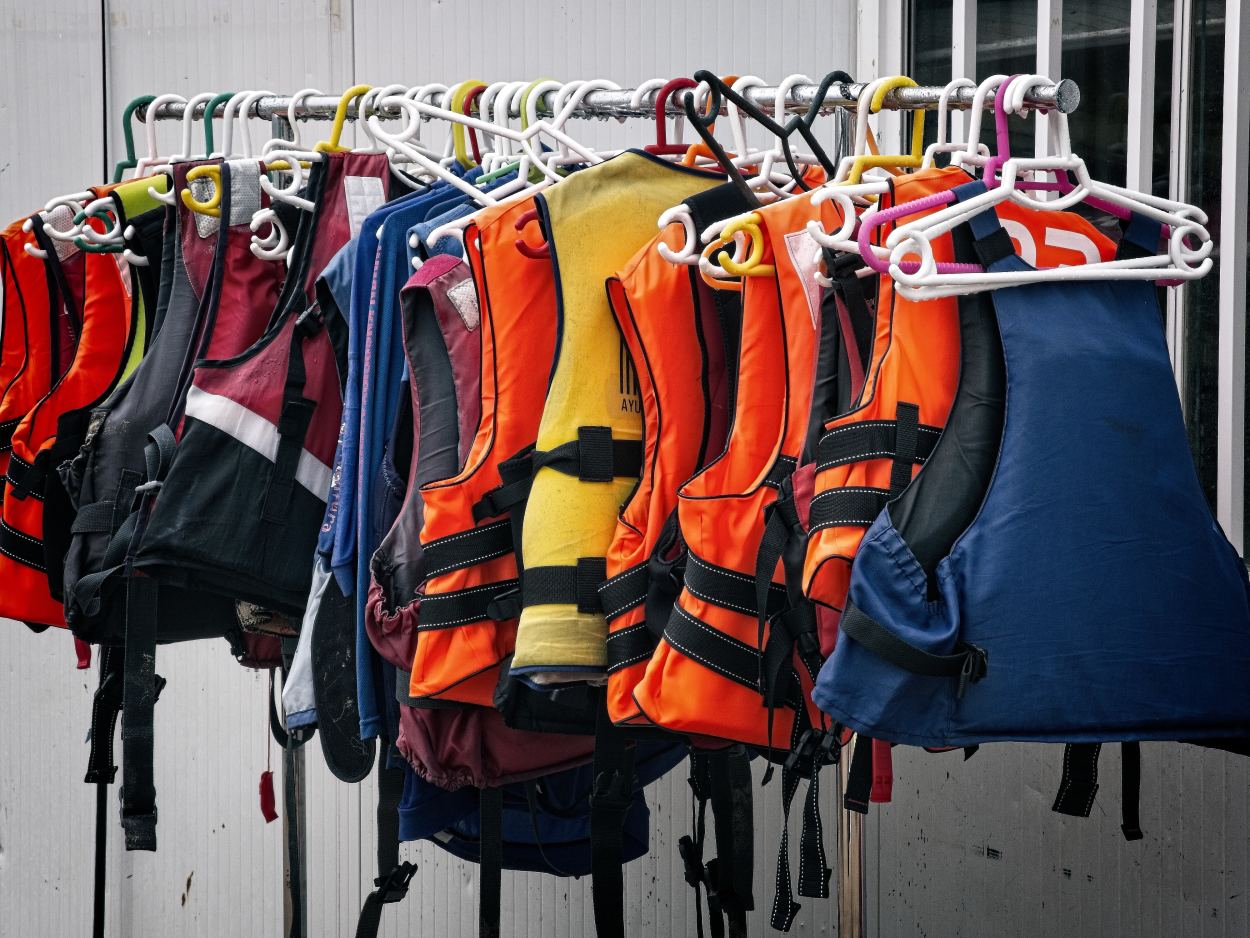Canoe Safety and Capsize Survival Skills
Justin
October 23, 2023

As an outdoor enthusiast, I find few things as liberating and awe-inspiring as embarking on a canoeing adventure. The serene waters, surrounded by lush landscapes and wildlife, provide the perfect setting for tranquility and introspection. As always however, the outdoors can be dangerous for those who are unprepared, and mastering canoe safety is essential for ensuring a smooth and enjoyable experience on the water. Here we will explore the crucial safety measures to take while canoeing and equip ourselves with the skills needed to handle a potential capsize situation, drawing insights from expert sources and organizations.
Section 1: Preparing for a Safe Canoe Adventure
1.1 Properly Assessing the Waters:
Before setting off on your canoeing journey, it's crucial to conduct thorough research about the waterway you'll be paddling on. Check with local park authorities, conservation organizations, or canoeing clubs for information on water conditions, potential hazards, and any special regulations. Assess the weather forecast and water current predictions to ensure safe paddling conditions for your skill levels.
American Canoe Association (ACA): "Water Trails & Access" (https://www.americancanoe.org/page/WaterTrails)
1.2 Equip Yourself with the Right Gear:
Investing in quality canoeing gear can make a significant difference in your safety and overall enjoyment. Ensure you have well-fitted personal flotation devices (PFDs) for every individual on board, and always wear them while on the water. Pack essential safety equipment like a whistle, a first aid kit, a throw rope, and a bilge pump to remove excess water from the canoe if needed.

Paddle Canada: "Safety on the Water" (https://www.paddlecanada.com/safety-on-the-water/)
1.3 Learning Basic Paddling Techniques:
Before venturing into the water, familiarize yourself with basic paddling techniques. Practice different strokes such as the forward stroke, sweep stroke, draw stroke, and the J-stroke. Efficient paddling not only makes your journey more enjoyable but also helps prevent unnecessary accidents.
REI: "Canoeing for Beginners" (https://www.rei.com/learn/expert-advice/canoeing-basics.html)
Section 2: Understanding Canoe Stability
2.1 Grasping Canoe Stability Concepts:
Canoe stability is vital in preventing capsizes. Canoes come in various designs, and some may have greater primary stability (initial steadiness) or secondary stability (resistance to tipping). Understanding your canoe's stability is crucial for maintaining balance and avoiding capsizing.
Paddling.com: "Canoe Stability - What Is It?" (https://paddling.com/learn/canoe-stability-what-is-it/)
2.2 Loading and Balancing the Canoe:
Improperly loading the canoe can lead to an unstable vessel. Keep the heaviest items low and centered in the canoe, distributing weight evenly between the bow and stern. Avoid overloading the canoe and maintain a low center of gravity.
Ontario Parks: "Canoeing Safety Tips" (https://www.ontarioparks.com/parksblog/canoeing-safety-tips/)
Section 3: Handling a Canoe Capsize
3.1 Staying Calm:
In the event of a capsize, the first and most crucial skill is to remain calm. Panicking can cloud your judgment and hinder your ability to respond effectively.
3.2 Prioritizing Safety:
Your safety and the safety of your fellow paddlers take precedence. Ensure everyone is accounted for and stays close to the canoe. If necessary, swim to shore with your PFD on, holding onto the canoe for flotation if possible.
National Park Service: "Canoeing Safety" (https://www.nps.gov/articles/canoeingsafety.htm)

3.3 Righting and Re-entering the Canoe:
After righting the canoe, you'll need to get back in. Practice reentering techniques in calm waters before venturing into more challenging conditions. In order to re-enter you must not only flip the canoe, but also remove the water and climb back in.
Canoe & Kayak Direct: "How to Get Back in a Canoe After it Capsizes" (https://www.canoeandkayakdirect.com/get-back-canoe-capsizes/)
Outdoor Project: "How to Right a Capsized Canoe" (https://www.outdoorproject.com/travel/how-right-capsized-canoe)
Section 4: Communicating and Seeking Help
4.1 Using Communication Signals:
Agree on communication signals with your fellow paddlers before starting the journey. Whistles and hand signals can be used to communicate effectively during a capsize situation. Not only that, but come up with a plan of action, as the more time you or someone else may be in the water, the more likely the situation could get worse.
Canoeing.com: "Canoe Hand Signals" (https://www.canoeing.com/canoe-hand-signals/)
4.2 Seeking Help:
In the event of an emergency or if you are unable to handle the situation, know how to seek help promptly. Having a plan for communication with others on land can be a lifesaver. I always recommend carrying some sort of satellite communication device if canoeing in the wilderness. iPhone 14 for example provides emergency SOS in areas without cell towers. In my case, I tend to carry a Garmin InReach Mini 2, which has come in handy once!
National Center for Cold Water Safety: "Crisis Management - Canoeing" (https://www.coldwatersafety.org/nccwsRules.html)
Canoeing offers a remarkable opportunity to connect with nature and embrace the outdoors. However, responsible adventurers must prioritize safety and be equipped with the necessary skills to navigate the waters confidently. By understanding canoe stability, mastering basic paddling techniques, and learning capsize survival skills, we can embark on our canoeing journeys with confidence and ensure a memorable and safe experience on the water. So, remember to prepare diligently, respect the water's power, and cherish every moment of your canoeing adventures! Happy paddling!